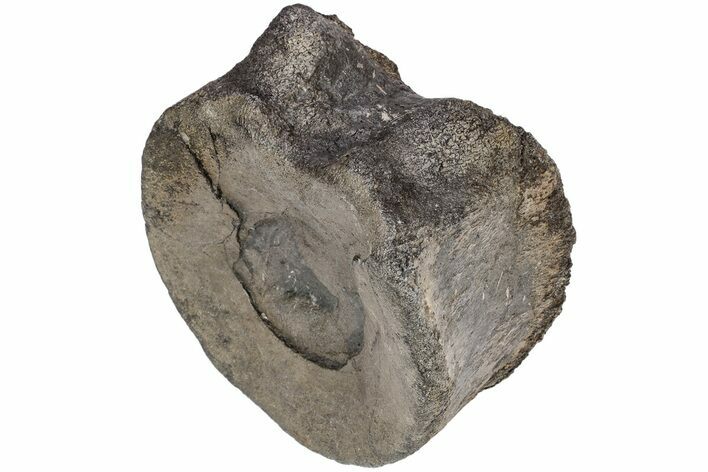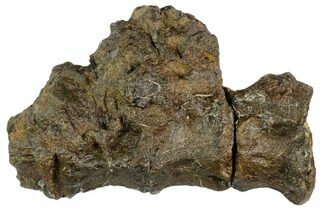This Specimen has been sold.
4" Sauropod Dinosaur (Cetiosaur) Vertebra - England
This is an unsual vertebra of a British sauropod dinosaur, Duriatitan humerochristatus. It was collected from a gravel pit in Abingdon, Oxfordshire, England. You really don't see British or European dinosaur material on the market very often.
It comes with an acrylic display stand.
Cetiosaurus, meaning 'whale lizard', was a herbivorous sauropod dinosaur from the Middle Jurassic Period of Europe.
Cetiosaurus was discovered in 1842 in England and the first sauropod from which bones were described in England. It is also the most complete sauropod to be found there. It was so named because its describer, Sir Richard Owen, supposed it was a marine creature, initially an extremely large crocodile, and did not recognixe it as a land-dwelling dinosaur. Because of this misunderstanding, eighteen unrelated species would eventually be named in the genus. Most of these have now been placed in other genera or are understood as dubious names based on poor fossil material. The last is true also of the original type species, Cetiosaurus medius: thus, Cetiosaurus oxoniensis was officially made the new type species in 2014. C. oxoniensis is based on three more or less complete specimens, discovered from 1868 onwards. Together they contain most of the bones with the exception of the skull.
C. oxoniensis was a "primitive", quadrupedal, long-necked, small-headed herbivore. It had a shorter tail and neck than most sauropods. The forelimbs, on the other hand, were relatively long. C. oxoniensis is estimated to have been about 16 meters (52 ft) long and to have weighed roughly 11 tonnes (12 short tons).
It comes with an acrylic display stand.
Cetiosaurus, meaning 'whale lizard', was a herbivorous sauropod dinosaur from the Middle Jurassic Period of Europe.
Cetiosaurus was discovered in 1842 in England and the first sauropod from which bones were described in England. It is also the most complete sauropod to be found there. It was so named because its describer, Sir Richard Owen, supposed it was a marine creature, initially an extremely large crocodile, and did not recognixe it as a land-dwelling dinosaur. Because of this misunderstanding, eighteen unrelated species would eventually be named in the genus. Most of these have now been placed in other genera or are understood as dubious names based on poor fossil material. The last is true also of the original type species, Cetiosaurus medius: thus, Cetiosaurus oxoniensis was officially made the new type species in 2014. C. oxoniensis is based on three more or less complete specimens, discovered from 1868 onwards. Together they contain most of the bones with the exception of the skull.
C. oxoniensis was a "primitive", quadrupedal, long-necked, small-headed herbivore. It had a shorter tail and neck than most sauropods. The forelimbs, on the other hand, were relatively long. C. oxoniensis is estimated to have been about 16 meters (52 ft) long and to have weighed roughly 11 tonnes (12 short tons).
SPECIES
Duriatitan humerochristatus
LOCATION
Abingdon, Oxfordshire, England
SIZE
4" tall, 3.97" wide
CATEGORY
SUB CATEGORY
ITEM
#206489
We guarantee the authenticity of all of our specimens.
 Reviews
Reviews














